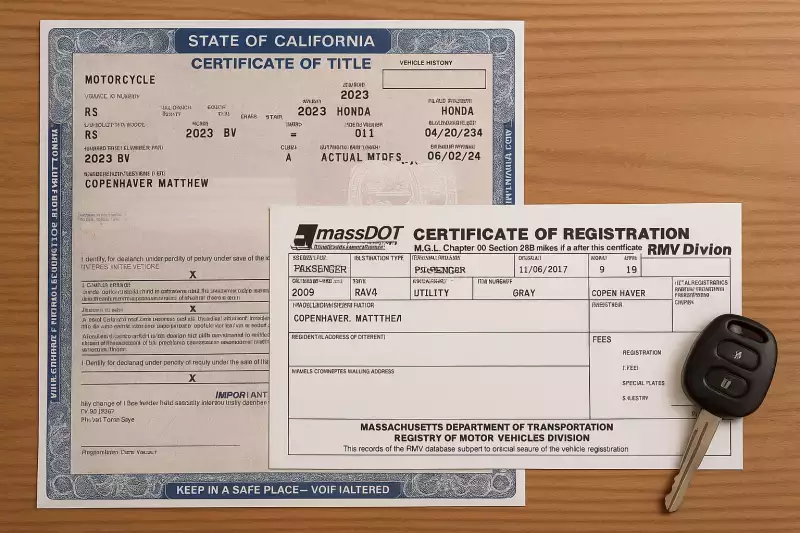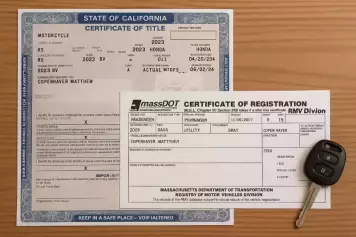Finding the exact car paint color codes is essential for achieving a seamless touch-up or repaint. Even a slight shade difference can make repairs stand out.
Whether fixing scratches, repainting panels, or restoring a classic car, knowing your vehicle’s paint code ensures an accurate color match. Typically, the code is found on a sticker inside the driver’s door or glovebox, but its location varies by make and model.
What is a Car Paint Code?
A car paint code is a unique combination of letters, numbers, or both that identifies the exact color of a vehicle's paint. Manufacturers use these codes to ensure precise color matching for touch-ups, repaints, or restorations.
Since multiple shades of the same color exist, relying on a general description like "silver" isn’t enough. For example, a 2008 Lincoln Town Car in Silver Birch Metallic has the paint code JP/M7052, while other Lincoln models from the same year might use different silver shades, such as Vapor Silver Metallic (ZY) or Silver Metallic (YN/M6505/M6895).
Car paint color codes are typically labeled as "paint code," "color code," or "exterior color code". Your car’s exact paint code helps ensure seamless touch-ups by preventing mismatched shades when ordering automotive paint.
Where to Find the Color Code on a Car
If you've ever asked, "What is the paint code for my car?" It's usually found on a sticker or metal plate inside the vehicle, though as mentioned above the exact location varies by make and model. The most common place to find it is on the driver’s door jamb. However, some manufacturers place it in the glove box, under the hood, on the trunk deck lid, or inside the spare tire compartment.
In some cases, the car color code might even be under the trunk mat or on the firewall. The sticker typically includes a barcode, the vehicle identification number (VIN), and the color code itself.
For motorcycles, the paint code is often located under the seat or near the rear frame, close to the VIN label.
If you're unsure where to look for car paint color codes, checking the owner’s manual or contacting the manufacturer can help.
How to Find Paint Code By VIN?
Many people assume that car paint code can be directly found using the VIN (vehicle identification number), but this is not accurate. While the VIN is a unique 17-character code that provides detailed information about a vehicle - such as its manufacturer, model year, production plant, and serial number - it does not explicitly include the paint code.
However, the VIN can still be a useful tool for locating the paint code. Some manufacturers enable dealerships to access paint code information using the VIN. By contacting your car’s dealership and providing the VIN, they can often retrieve the correct paint code for your vehicle.
Additionally, certain third-party services claim to decode VINs and provide details regarding car paint color codes. While these services can be helpful, their accuracy depends on the reliability of their databases and the quality of their sources. It’s important to cross-check any information obtained from third parties to ensure it matches your car’s exact paint color.
For the most precise match, checking your car's physical paint code label - typically found in the driver’s door jamb, glove box, or under the hood - is always the best option.
Paint Code Locations for Different Car Makes
When looking for the car paint code, the location varies depending on the manufacturer. Refer to the table below to find where car paint color codes are often located. If you can't find the code or if the original parts of the car were removed or altered, call the appropriate manufacturer in your area for assistance.
| Car Make | Paint Code Location | Color Code Examples |
| Chevrolet | Driver side door jamb, behind/under driver seat, rear of middle console, rear deck lid, spare wheel cover/well, inside glove box | GNX/WA715U,74/WA9260 |
| Honda | Driver side door jamb | NH-603P, BG-62M |
| Nissan | Driver side door jamb, door pillar, hinge area, firewall, engine compartment, radiator support | K36, QAB |
| Mercedes Benz | Driver side door jamb, radiator support bar, engine compartment | DB-761, 197/9197 |
| GMC | Service parts identification sticker (location varies by model year) | U8554, WA401E |
| Subaru | Strut towers, passenger side door edge, or door jamb | 37J, G1U |
| Porsche | Around spare tire, white paper label (location varies) | LM7W, 3AU |
| Ford | Driver side door jamb or door frame | F7/M6817,SD/M6766 |
| Toyota | Driver side door jamb | 218, 4T8 |
| Hyundai | Driver side door jamb, under hood, firewall | YP5, R2T |
| Mazda | Driver side door jamb, firewall | SQ, 6W |
| Audi | Trunk, under trunk deck lid, rear compartment, under mat, spare tire wheel well | LY1V, L90E |
| Jeep | Driver side door jamb (recent models), firewall, radiator support bar, under driver seat (older models) | 4D, PAU/LAU, LC5, S4A |
| Lexus | Driver side door jamb | 212, 1G1 |
| Infiniti | Driver side door jamb, door edge, hinge area | RAF, K52 |
| Volkswagen | Rear deck lid, rear compartment, under trunk mat, spare tire wheel well | L041, LD7, LZ9Y |
To maintain a flawless look, it's important to know your car color code for precise matching during touch-ups or repainting. Even small color variations can be obvious, so it’s best to verify the car paint color codes with your manufacturer before ordering paint.








![Best Sites to Check a Car’s History [2025 Review]](https://media.infopay.net/thumbnails/K8lMeG2QLjE46LPqZlmoi6SunKKdT5qvlaRZk6e1.webp)










![Best Sites to Check a Car’s History [2025 Review]](https://media.infopay.net/thumbnails/K8lMeG2QLjE46LPqZlmoi6SunKKdT5qvlaRZk6e1-w356.webp)
